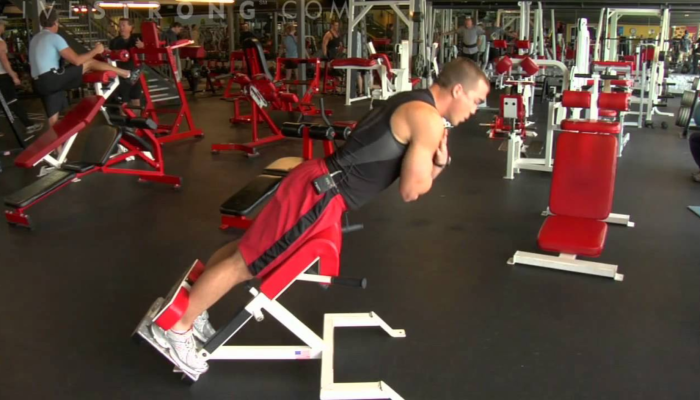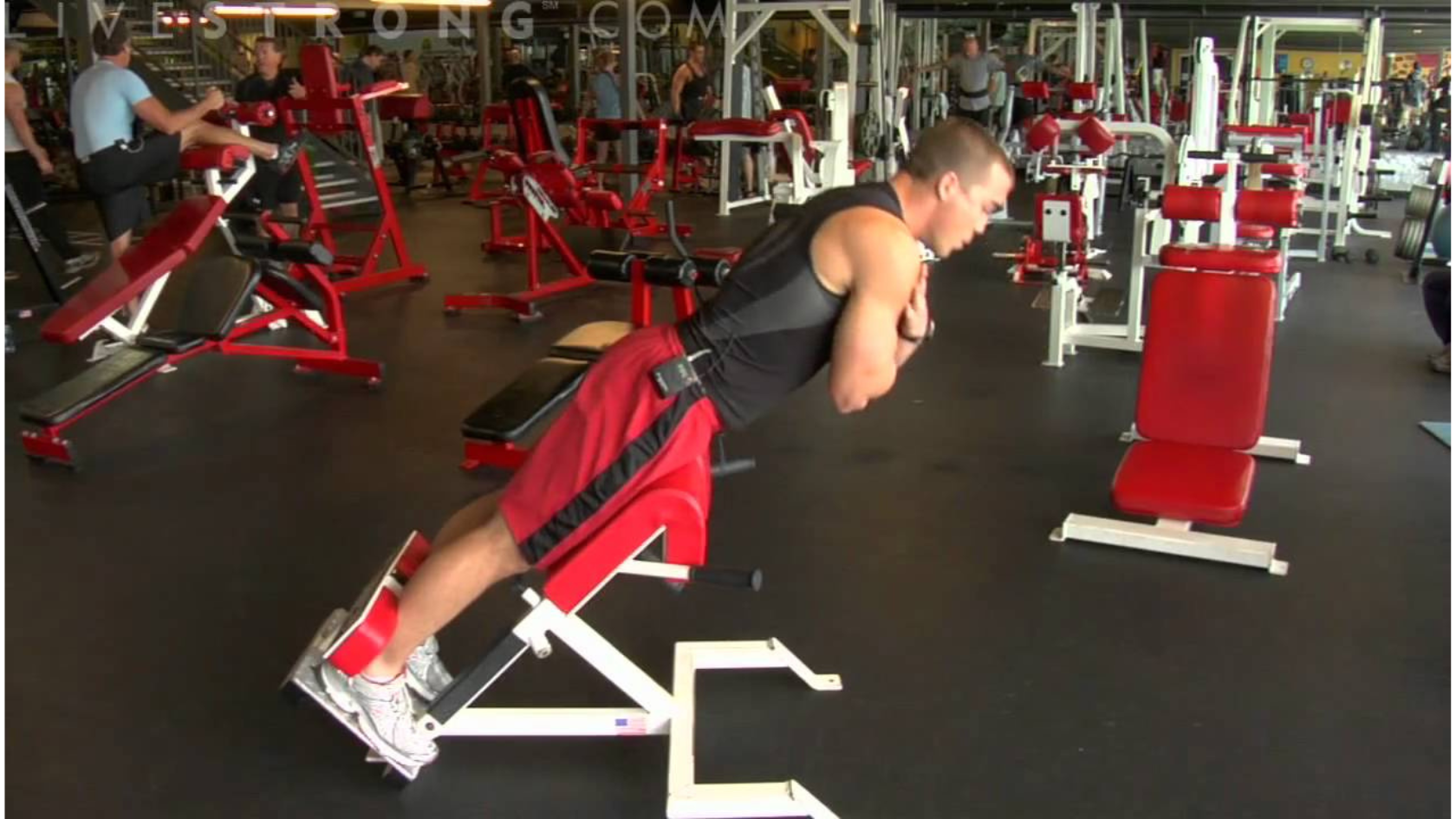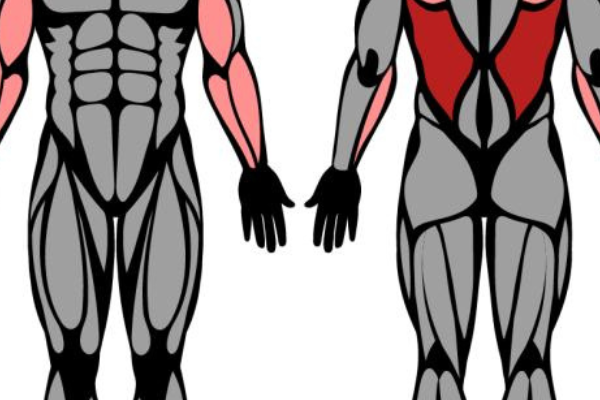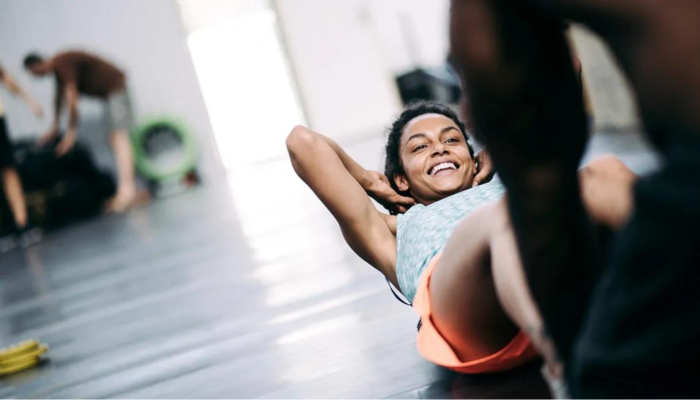
Back extension exercises are fundamental for strengthening the lower back, enhancing stability, and improving posture. This guide will walk you through the correct techniques and variations, ensuring you understand the muscles worked in each exercise.
How to Do a Back Extension Correctly
Performing a back extension correctly is crucial to avoid injury and maximize the benefits. Here’s a step-by-step guide:
- Positioning: Lie face down on a back extension bench, securing your feet under the footpads. Adjust the pad so it supports your thighs but allows free movement of your hips.
- Execution: Cross your arms over your chest or place your hands behind your head. Slowly lower your upper body towards the ground, maintaining a straight spine. Engage your lower back muscles as you raise your torso back to the starting position.
- Breathing: Inhale as you lower your body and exhale as you lift back up.
Understanding what muscles do back extensions work is essential. Primarily, this exercise targets the erector spinae, glutes, hamstrings, and the lower back muscles.
Back Extension Machine
The back extension machine is a popular tool in gyms for isolating the lower back muscles. Here’s how to use it:
- Setup: Adjust the machine to fit your height. Sit on the seat and place your feet under the footpads.
- Movement: Lean forward at the waist, keeping your back straight. Use your lower back muscles to return to the upright position.
- Muscles Worked: This machine back Extension Exercises muscles worked includes the erector spinae, glutes, and hamstrings.
Low-Back Extensions with Weight
Adding weight to your low-back extensions can increase the intensity and further strengthen your muscles. Follow these steps:
- Preparation: Hold a weight plate against your chest or use a barbell across your shoulders.
- Form: Perform the back Extension Exercises as described earlier, ensuring you maintain proper form.
- Focus: The additional weight increases the load on the back Extension Exercises muscles, enhancing muscle activation and growth.
Back Extension Floor Work
Floor-based back extensions are excellent for those without access to gym equipment. Here are some variations:
Basic Back Extension
- Position: Lie face down on a mat with your arms extended in front of you.
- Movement: Lift your chest and legs off the ground simultaneously, engaging your lower back muscles.
- Target: This exercise effectively works the lower back muscles without any equipment.
Superman Variations
The Superman exercise is a popular variation for targeting the back muscles.
Alternating Superman
- Setup: Lie face down with your arms extended in front of you.
- Execution: Lift your right arm and left leg off the ground simultaneously, then switch sides.
- Benefits: This variation enhances balance and engages the lower back and glutes.
Back Extension Benefits
Incorporating back extensions into your routine offers numerous benefits:
- Strengthening: Back extensions target muscles in the lower back, improving overall strength.
- Posture Improvement: Regular practice helps correct poor posture by strengthening the back muscles.
- Injury Prevention: Strengthening the lower back reduces the risk of injuries, especially in the lumbar region.
- Functional Fitness: Enhances performance in other exercises and daily activities by building a solid core foundation.
The Takeaway
Back Extension Exercises exercises are a vital component of a well-rounded fitness regimen. They specifically target and strengthen the lower back muscles, offering numerous benefits for posture, injury prevention, and overall back health. Whether using a machine, weights, or performing floor variations, understanding the correct form and muscles worked in back Extension Exercises exercises is crucial for maximizing results and minimizing injury risk. Incorporate these exercises into your routine to build a stronger, more resilient back.
Incorporating back Extension Exercises exercises into your fitness routine is an effective way to build a stronger and more resilient back. Understanding the specific muscles worked during these exercises helps you target the right areas and achieve better results. Here’s a closer look at the benefits and the essential techniques for each type of back Extension Exercises exercise.
How to Do a Back Extension Correctly
Performing back extensions with the correct form is crucial to maximize the effectiveness and minimize the risk of injury. Here’s how to do it:
- Positioning: Start by lying face down on a back Extension Exercises bench, ensuring your hips are positioned over the edge of the pad.
- Execution: Cross your arms over your chest or place your hands behind your head. Slowly lower your upper body towards the floor, keeping your back straight and engaging your core muscles. Use your lower back muscles to lift your torso back to the starting position.
- Breathing: Inhale as you lower your body and exhale as you lift back up.
The muscles worked in back Extension Exercises include the erector spinae, which runs along the spine, the glutes, and the hamstrings.
Back Extension Machine
The back Extension Exercises machine is a staple in most gyms and provides a stable platform for isolating the lower back muscles. Here’s how to use it effectively:
- Setup: Adjust the machine to fit your height. Sit on the seat and place your feet under the footpads.
- Movement: Lean forward at the waist while keeping your back straight. Engage your lower back muscles to lift your torso back to the starting position.
- Muscles Worked: This machine primarily targets the erector spinae, glutes, and hamstrings, making it an excellent tool for strengthening the lower back.
Low-Back Extensions with Weight
Adding weight to your low-back extensions can significantly increase the intensity of the exercise, leading to greater strength gains. Here’s how to incorporate weights:
- Preparation: Hold a weight plate against your chest or use a barbell across your shoulders.
- Form: Perform the back Extension Exercises as described earlier, ensuring you maintain proper form to avoid injury.
- Focus: The additional weight increases the load on the muscles worked in back extension, particularly the erector spinae and glutes.
Back Extension Floor Work
Floor-based back extensions are great for those who don’t have access to gym equipment. These exercises can be performed anywhere and are highly effective.
Basic Back Extension
- Position: Lie face down on a mat with your arms extended in front of you.
- Movement: Lift your chest and legs off the ground simultaneously, engaging your lower back muscles.
- Target: This exercise targets the lower back muscles, improving strength and stability without any equipment.
Superman Variations
The Superman exercise is a popular variation for targeting the back muscles, especially when performed with proper form.
Alternating Superman
- Setup: Lie face down with your arms extended in front of you.
- Execution: Lift your right arm and left leg off the ground simultaneously, then switch sides.
- Benefits: This variation enhances balance and engages the lower back and glutes, promoting overall back strength.
Back Extension Benefits
Incorporating back extensions into your routine provides numerous benefits:
- Strengthening: Back extensions specifically target the lower back muscles, improving overall strength and stability.
- Posture Improvement: Regular practice helps correct poor posture by strengthening the back muscles, reducing the risk of postural imbalances.
- Injury Prevention: A strong lower back reduces the risk of injuries, particularly in the lumbar region, by providing better support for the spine.
- Functional Fitness: Enhances performance in other exercises and daily activities by building a solid core foundation, which is essential for overall functional fitness.
The Takeaway
Back extension exercises are an essential component of a comprehensive fitness regimen. They specifically target and strengthen the lower back muscles, offering numerous benefits for posture, injury prevention, and overall back health. Whether using a machine, weights, or performing floor variations, understanding the correct form and muscles worked in back extension exercises is crucial for maximizing results and minimizing injury risk. Incorporate these exercises into your routine to build a stronger, more resilient back.
Understanding the muscles worked in back extension exercises helps you target the right areas and achieve better results. Prioritize proper form and gradually increase the intensity to reap the full benefits of these essential exercises.
If you have any questions for us, you can see more at: heathcarenow, Youtube, Twitter(X),…
See more of our other articles: What is Jaw Pain ?, Catabolism vs. Anabolism: What’s the Difference?, Tennis Ball Massage for Myofascial Trigger Points





